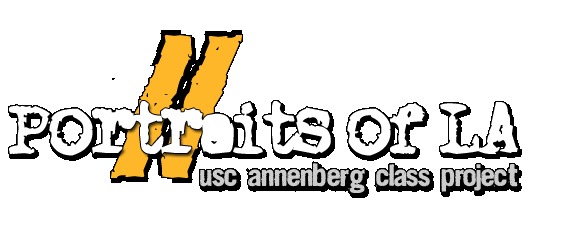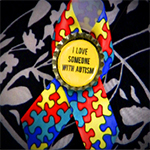Terror Inside the Medicine Cabinet
The nation is facing an epidemic caused by a rising number in prescription drug abuse. Due to the easy access to these drugs the trend is seeping into the high schools, and in some cases elementary schools, at an alarming rate. Los Angeles Unified School District members and health specialists are working together to prevent this rising trend.
With about 7,000 homeless youth in Los Angeles, shelters are struggling to keep up with the overwhelming number of young people without a permanent home. But shelters and experts say the number of homeless youth in this city is almost impossible to calculate and could be higher than we imagine, since most homeless youth hide in plain sight, and most hide out in Hollywood.
Areva Martin founded the Special Needs Network when her son was also diagnosed with autism and because, “there was no parent group in South L.A. that focused on advocating for their children’s rights”. Martin also says parents in South L.A. are at a disadvantage when it comes to resources and education for their children who have autism.
Sexaul assault and rape victims are often the accused. Whether it's because "they were drunk" or "made bad decisions," victims, for years have received blame. And worse, as cyberbulling gains popularity, that blame is doubled. Here a survivor, and sexaul assault/rape educators and advocators speak about why it is never okay to blame the victim.
Tina Kim Interview
Tina Kim, Health Behavior Research Specialist for Los Angeles County, explains the history and research that suggests why prescription drug overdose trends have risen over the last few years.
The road to recovery from opioid addiction for Tim began with a set of four gold coins. After pawning these four antique gold coins he had stolen from his grandfather’s collection for $1200, Tim—whose identity will remain anonymous—was able to refill his supply of OxyContin to last him his Christmas break. Shortly after this exchange his parents discovered the receipt from the pawn shop and confronted their eldest son.
“At this point I didn’t even have a choice,” he explained. “I didn’t know what to say.” It was then that he realized that his occasional recreational use of painkillers had turned into a dangerous habit. “I said to [my parents] I think I have a problem with painkillers, with OxyContin.” Tim describes this moment as one of his lowest points in his struggle with addiction to prescription painkillers.
Tim’s struggle represents a national problem that is now considered an epidemic, which has spread across the United States. According to the Centers for Disease Control and Prevention (CDC), in 2011 the number of accidental deaths caused by prescription drug overdose surpassed the number of deaths caused by motor vehicle accidents.
This alarming statistic has sparked a national conversation centered on the question: Where does prevention begin? Should this substance abuse prevention begin with education for high school and middle school students, addiction education for doctors or simply removing opiates from the shelves?
People from all walks of life, from policy makers to chronic pain sufferers, have joined in the discussion over what the solution to this problem is. This is not simply an issue of illegal drug use; the outcome has the potential of jeopardizing the quality of life for the thousands of chronic pain sufferers. If opioids are no longer available, what quality treatment options remain for them?
Tim Kordic, who works with the Los Angeles Unified School District (LAUSD) planning health education courses, believes that prevention begins in the classroom. Part of his job in the district is to supply surveys to students throughout Los Angeles to measure pressing trends and possible prevention tactics that could be effective.
“[Prescription drug addiction] is one of the areas where we’ve seen the biggest spike,” Kordic said. According to these issued surveys, abuse of these medications has gone up about three hundred percent. He attributes this trend to the accessibility of these drugs. “Go home and look at your bathroom cabinet,” he said. “That’s where they’re getting it from, or even their grandmother’s cabinet.”
Abusers of these prescribed medications most often times obtain them from a relative or friend. About 10 percent of abusers get them directly from a doctor, and around one percent have access to them through internet pharmacies.
The LAUSD, along with other organizations throughout the nation, has made it their mission not only to educate their students on the dangers of prescription drug abuse, but also the community. “There’s a lack of education because it wasn’t the type of drug that parents really worried about,” he said. According to Kordic, he has often found that the reaction from parents and community members is, “Prescription drugs are there to help you, not hurt you.”
That was the reaction Tim was faced with from his friends and family members when he admitted to abusing OxyContin. “They didn’t really understand what it meant,” he said.
As a football player in high school, he began using prescribed painkillers after practice. “I always had an affinity for prescription painkillers,” Tim said. And even though, his recreational use started here, he believes that his actual addiction began between his sophomore and junior year of college.
During this time he came down with a strange illness in his chest that doctors could not find the proper diagnosis for. It took nearly three months for them to figure out what Tim was suffering from. “I was being fed this narcotic cough syrup, which was basically like liquid Vicodin,” he said, “It was the only thing that stopped the cough.”
After discovering an infection in his lungs and having surgery performed, Tim was placed on even more painkillers for the next couple of months. “I think having that prolonged experience with the painkillers is what really triggered my addiction,” he said.
The following year he found his lifeline to OxyContin through a young man in Youngstown, OH, a town situated three hours from his college. “I could get it whenever I wanted it,” he said, and through this connection his addiction to the opiate-based painkiller flourished. Throughout his junior year in college, Tim would make the three-hour drive once a week to get his weekly supply of OxyContin.
OxyContin, like many painkillers, is an opiate-based drug. “People think that prescription drugs are safer,” said Tina Kim, Health Science Specialist for Los Angeles County. “People are not aware that they can be just as dangerous as illicit drugs.” According to Kim, opioid pain relievers are now involved in more overdose deaths nationwide than heroin and cocaine combined.
She explained that Americans comprise a little over four percent of the world population, however they consume 80 percent of the world’s opium supply. In her opinion, the rise in prescription drug abuse is largely due to the United States’ history of pain treatment.
Prior to 1999, doctors and physicians faced legal action if they prescribed opioids to a patient who suffered from addiction. Out of fear of prosecution, doctors would often under-treat pain. However, in 1999 these regulations were reduced and the focus shifted from addiction to pain treatment. “One in four Americans have recurring pain issues,” Kim said. “So, the pain is a real issue as well.”
She explained that by the early 2000’s, with this new shift in focus to treatment for pain management, education within medical schools did not keep up with the shifting trends. “The average education in medical school on pain and addiction was seven hours in the United States,” Kim said. That is compared to 14 hours of this type of training in Canada. Doctors were however informed that the best treatment for pain was through opioids. By 2002, prescription drug related deaths skyrocketed.
Currently, Hydrocone, most widely known as Vicodin, is the most refilled prescription in Los Angeles. Unlike illicit drugs, the demographic of users spans across all ages, races and economic classes.
Tim relapsed into his old habits two more times before finally overcoming his addiction. Although he had never struggled with alcoholism, he discovered that to maintain sobriety he had to give that up as well, which was difficult to do while attending his small liberal arts college, where as he explained it, “The only thing to do for fun was drink and do drugs.”
He now works as a lawyer in Ohio and is married with two small children. He has been sober since January of 2008 and explained, “There’s nothing that someone could have said to me to make me stop, apart from doing it on my own.” From his experience he believes that if an addict or an alcoholic does not want to change, then it will not happen.
It is widely known that an addict will find ways of getting high regardless of what it is that is giving them that fix. If opioids are replaced with non-addictive, weaker painkillers, officials expect to see a spike in heroin use, similar to its peek in the seventies and are currently preparing for that trend as well as a rise in Internet pharmacies.





